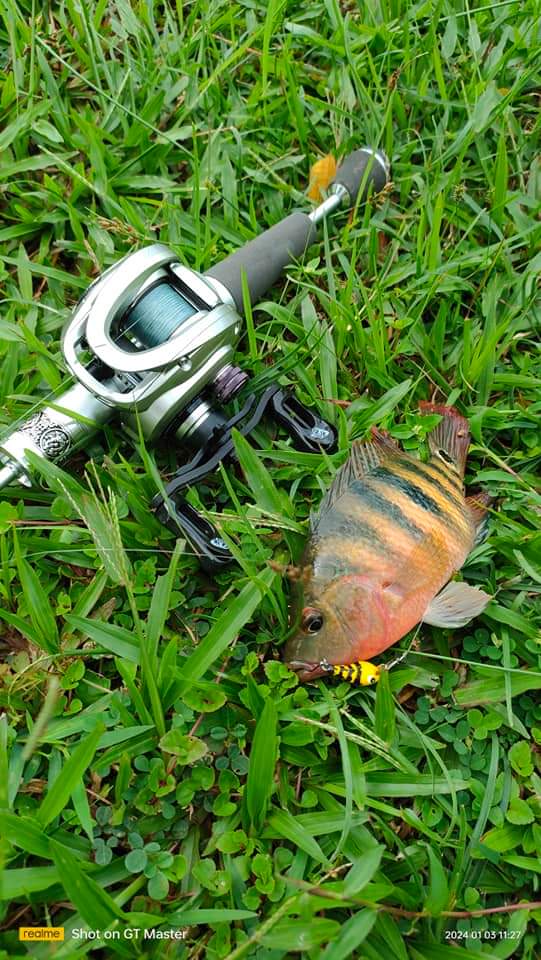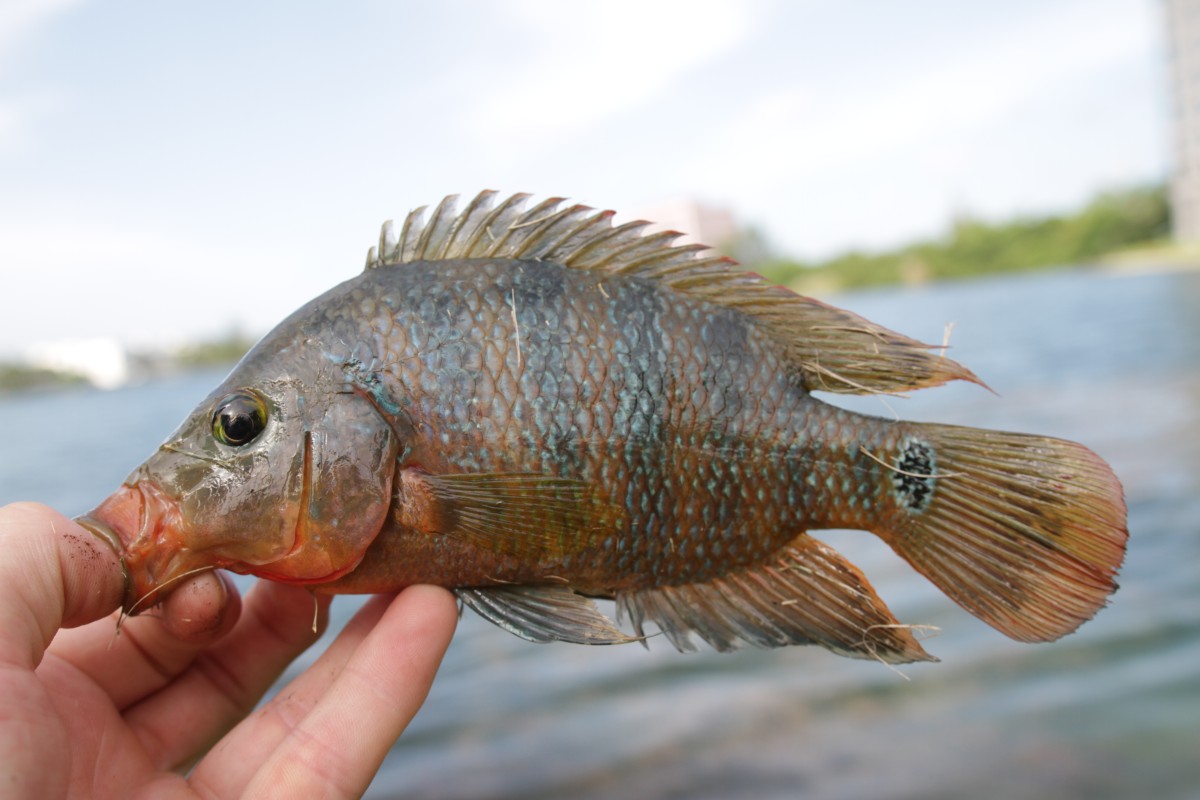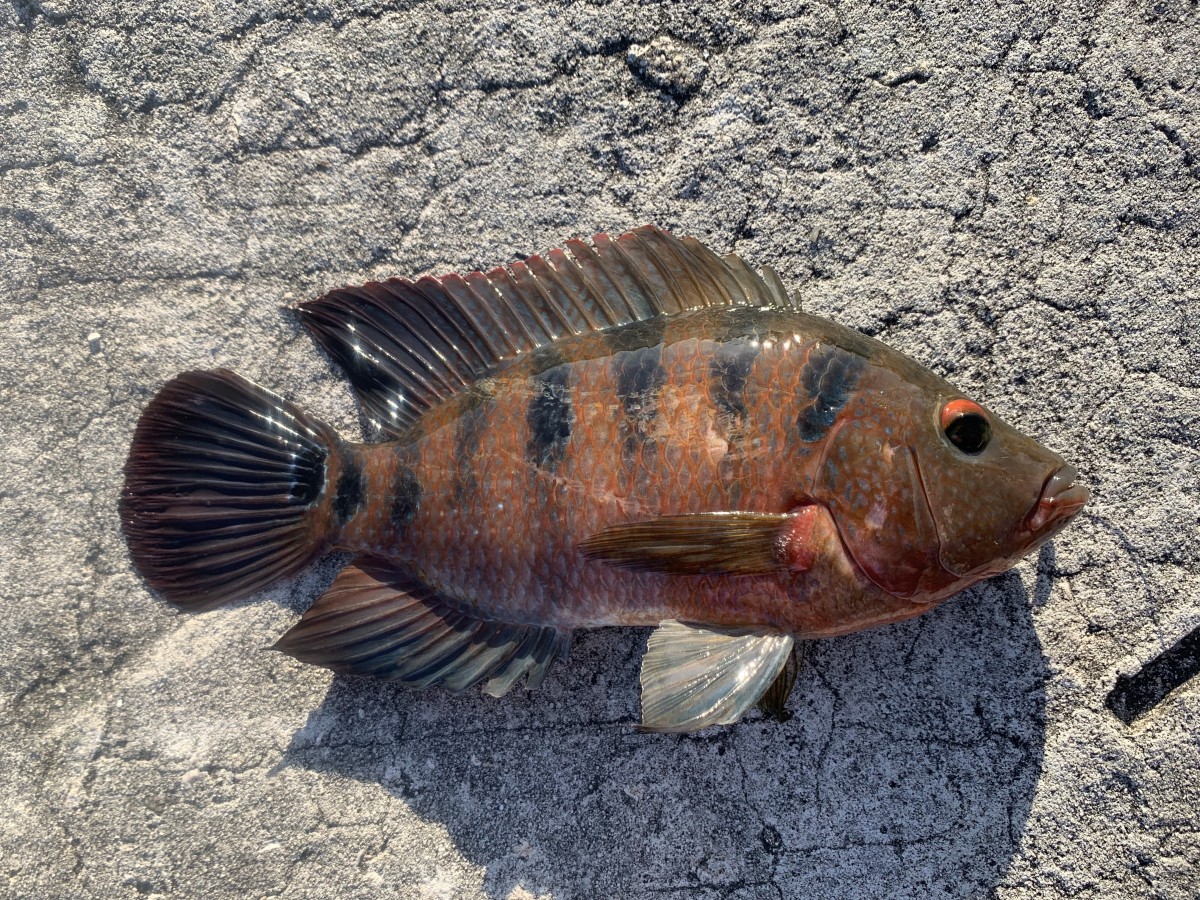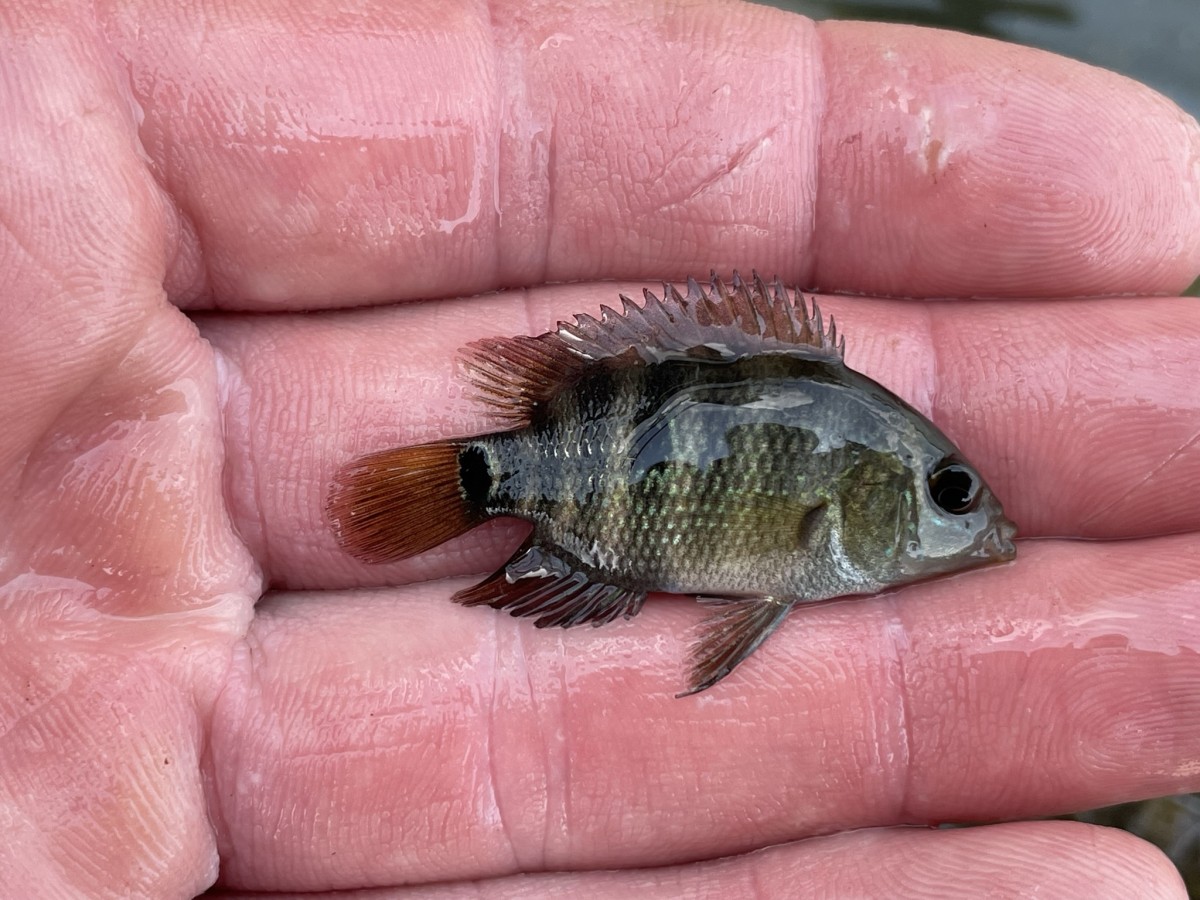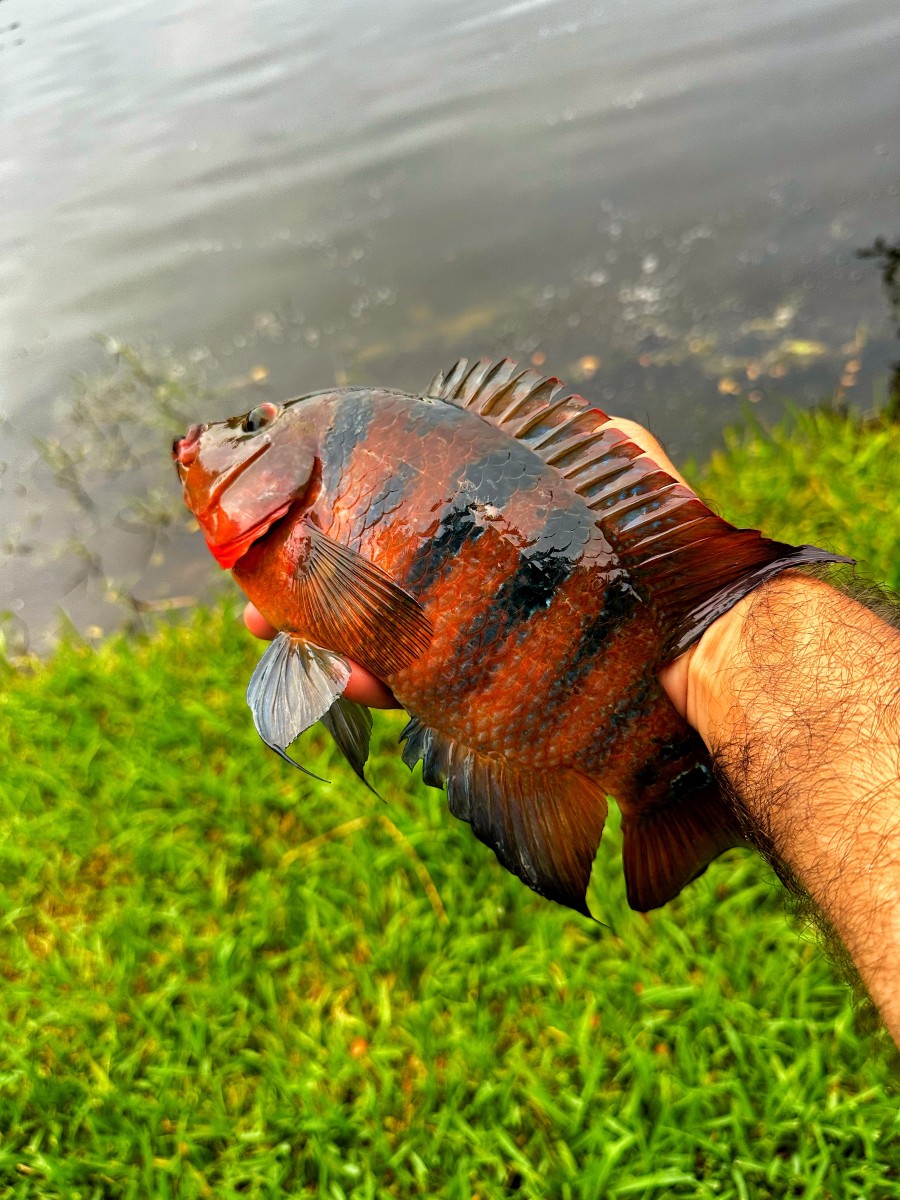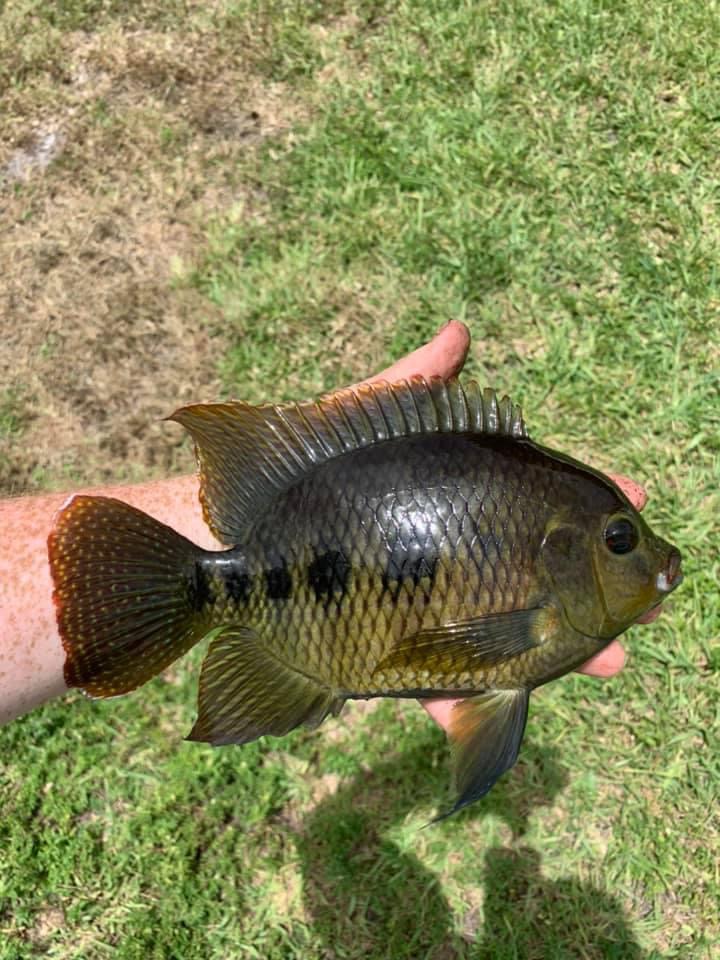Mexican mojarra
(Mayaheros urophthalmus)
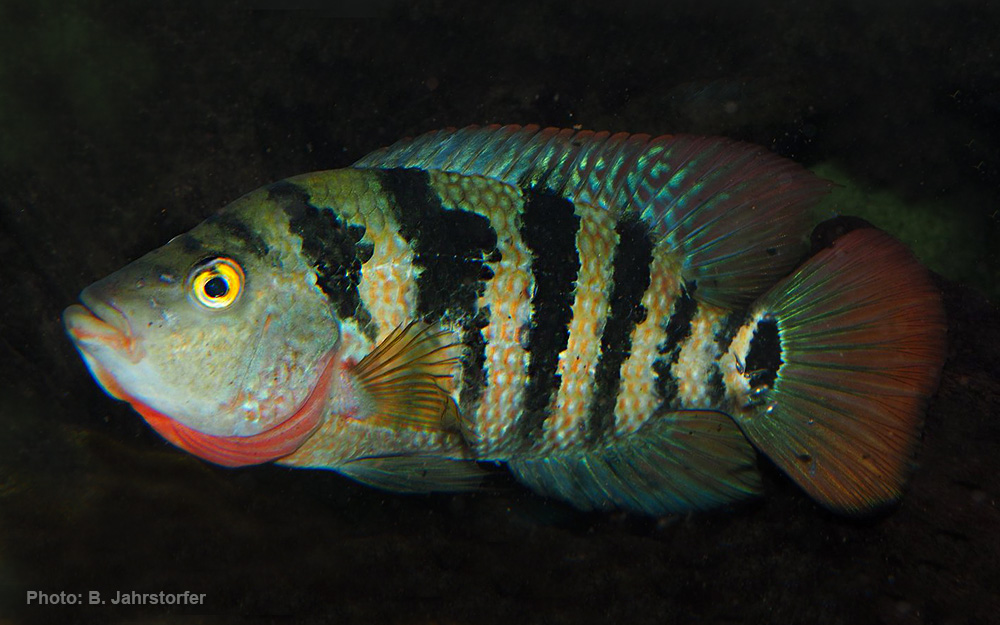
Classification
General data
This species can be found in Middle America. It is native to the Atlantic slope of tropical Mesoamerica, ranging from eastern Mexico southward to Nicaragua.
It was first recorded from Everglades National Park, Florida in 1983 and is now a common nonindigenous fish in South Florida.
The Mayan cichlid inhabits freshwater marshes, mangrove swamps, lakes, rivers, rocky shorelines, lagoons, estuaries and coastal islands. Adults prefer coastal lagoons and rivers and may survive in marine conditions. It can be found in oxygen-rich areas near submerged vegetation and over muddy substrates.
However, despite its preference for waters with dissolved oxygen content of at least 3.5 mg/L, it is capable of surviving in extreme hypoxia. This is because it is an oxygen conformer, becoming much less active in hypoxic water, and even surviving virtual anoxia for up to two hours. Unusually, this fish has been recorded in some cenotes in the Yucatan Peninsula.
Description
This fish is one of the larger cichlids reaching a maximum length of 40 cm.
The body is oval and flattened on the sides and the head is tapering towards the mouth. Fins are spiny. It has a base color of yellow-brown to gray-brown in most cases, that becomes intense red during breeding. The head and throat are reddish, especially in younger fish. The caudal fin and the soft-sections of the dorsal and anal fin are usually more or less reddish. Six wide green-black vertical stripes run across the sides of the body between the base of the pectoral fin and the base of the caudal fin. There is a large black eye spot circled with blue-green on the tail stem (hence the species scientific name urophthalmus (from oura, Greek for tail and ophthalmos, Greek for eye.
Since the distribution area of the species is relatively large, this species may occurs in different colors, which may differ from the one described above.
